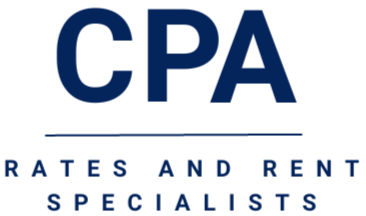Business Rates Reduction Service: Unlocking Savings for Your Business
- peterw022
- Oct 16, 2024
- 7 min read

Business rates can be a significant burden for businesses across the UK, particularly for small and medium-sized enterprises. However, business rates reduction services offer a lifeline, helping companies reduce this financial load. This guide provides an in-depth look at how these services work, the benefits they offer, and why businesses should consider professional help when tackling their business rates.
What are Business Rates?
Business rates, also known as non-domestic rates, are taxes on the use of property for business purposes. They are a substantial operating cost for many businesses, ranging from retail stores to offices and warehouses. The rates are determined by the local government based on the property's "rateable value" and are paid annually.
Importance of Reducing Business Rates
High business rates can stifle growth and innovation, particularly for smaller businesses. These taxes can drain cash flow, reduce profitability, and create unnecessary financial strain. As such, reducing business rates through specialised services can provide much-needed relief, enabling businesses to reinvest in operations, staff, and expansion.
Overview of Business Rates Reduction Services
Business rates reduction services specialise in reviewing your business’s rateable value and determining whether it has been overestimated. If so, they can help you appeal for a lower rate or identify potential relief schemes. These services typically employ experts in property valuation, law, and government policies to ensure your business is not overpaying.
Understanding Business Rates
What are Non-Domestic Rates?
Non-domestic rates, commonly referred to as business rates, are similar to council tax but are charged on properties used for commercial purposes. These include shops, offices, factories, warehouses, and even businesses operating from home-based offices.
How Business Rates are Calculated
Business rates are calculated based on a property's rateable value, which is its estimated rental value on the open market, as assessed by the Valuation Office Agency (VOA). The rateable value is multiplied by a multiplier set by the government, with adjustments for factors like inflation or specific exemptions.
Who Pays Business Rates?
Any business that occupies a commercial property must pay business rates, though there are exemptions and relief schemes available for certain businesses, such as small enterprises and charities.
Reasons for High Business Rates
Factors Contributing to High Business Rates
Several factors influence the level of business rates, including the size, location, and usage of the property. For instance, properties in prime commercial areas often have higher rateable values, leading to higher taxes. Moreover, changes in local property markets can drive rates up during valuation periods.
Impact of Property Valuation on Business Rates
The VOA conducts revaluations of business properties every few years to reflect changes in the market. If the market has surged since the last valuation, businesses can face significantly higher rates. However, revaluations also provide an opportunity to challenge and reduce the rateable value.
Government Legislation and Business Rates
Government policies heavily influence business rates, with rates often increasing due to regulatory changes. However, the government also offers relief programs aimed at reducing the burden on smaller businesses or those in specific sectors.
How Business Rates Reduction Services Work
Role of Professional Consultants in Rate Reductions
Business rates reduction services are typically led by professional consultants who specialise in property law, valuation, and tax policies. These experts analyse the business's rateable value, ensuring it accurately reflects the property’s market value. If discrepancies are found, they can appeal the rates on your behalf.
Process of Business Rates Appeal
The appeal process starts with a detailed review of your property’s current valuation. Consultants will gather evidence to support their case, such as comparable properties with lower valuations. Once the case is built, an appeal is submitted to the VOA, which may lead to a reduction if the valuation is found to be excessive.
Criteria for Business Rates Reduction Eligibility
Businesses that believe their property’s valuation is incorrect or that they qualify for relief can benefit from these services. Eligibility often depends on factors like the property’s size, location, or how long the business has been operating.
Common Mistakes to Avoid in Reducing Business Rates
Without professional guidance, businesses may overlook important details in their rate assessments, submit incomplete appeals, or miss deadlines. Such mistakes can lead to delays or unsuccessful appeals, which is why it's crucial to use experienced professionals.
Benefits of Business Rates Reduction Services
Financial Benefits for Businesses
The immediate financial benefit of business rates reduction is a lower tax bill, which can improve cash flow and overall profitability. For many businesses, this can represent thousands of pounds in annual savings, which can be reinvested in growth opportunities.
Long-Term Savings and Business Growth
By reducing the tax burden, businesses can enjoy long-term financial savings. These savings can be used to hire new employees, expand services, or upgrade facilities, fostering sustainable growth and competitiveness.
Strategic Advantage in Competitive Markets
In industries where margins are tight, reducing operating costs can provide a critical competitive advantage. A lower tax bill means more funds are available for marketing, product development, or other strategic initiatives.
Types of Business Rates Relief
Several relief schemes are available to businesses that meet specific criteria:
Small Business Rates Relief
This relief is available to businesses that occupy a maximum two properties with a rateable value below a certain threshold, significantly reducing or eliminating their rates bill.
Rural Rate Relief
Rural businesses in designated areas can qualify for rate reductions, supporting the economic health of rural communities.
Charitable Rate Relief
Charities and non-profit organisations may receive up to 80% relief on their business rates.
Enterprise Zone Relief
Businesses located in enterprise zones, designated by the government for economic growth, may receive additional rate relief.
Choosing the Right Business Rates Reduction Service
Key Qualities to Look for in a Service Provider
When choosing a business rates reduction service, look for providers with a proven track record in successful appeals, in-depth knowledge of property law, and a strong understanding of government policies. Ensure they offer personalised support tailored to your business’s specific needs.
Importance of Expertise and Proven Success Rates
Expertise in the field is crucial, as the appeal process can be complex. Providers with a history of success in similar cases are more likely to achieve a positive outcome for your business.
Client Testimonials and Case Studies
Look for testimonials and case studies that demonstrate the provider's ability to secure rate reductions for businesses like yours. These success stories can offer reassurance and insight into what to expect from the service.
The Business Rates Appeal Process
Steps Involved in Filing a Business Rates Appeal
The first step in filing an appeal is a thorough review of the VOA's assessment of your property. Once discrepancies are identified, evidence is gathered, and an appeal is submitted to the VOA.
Understanding the Valuation Office Agency (VOA)
The VOA is responsible for assessing rateable values for business properties. If you believe the VOA’s assessment is incorrect, you can challenge it through a formal appeal.
Appealing to a Tribunal
If an appeal to the VOA is unsuccessful, businesses can escalate their case to a tribunal, where an independent panel reviews the evidence and makes a final decision.
Legal Considerations in the Appeals Process
It’s important to understand the legal implications of the appeals process, as businesses may need to engage legal professionals to navigate complex regulations.
Government Initiatives and Reforms
Recent Reforms in Business Rates Policies
The UK government has introduced several reforms aimed at easing the burden of business rates, including periodic revaluations and expanded relief programs for small businesses.
Future Trends and Predictions for Business Rates Reductions
Experts predict that further reforms may be introduced to modernize the business rates system, possibly aligning it more closely with digital commerce trends as brick-and-mortar businesses face increasing competition from online retailers.
Common Challenges Faced by Businesses
Navigating Complex Legislation
Business rates legislation can be complex, and navigating it without professional help can lead to missed opportunities for savings.
Risks of Appealing Without Professional Help
DIY appeals can often result in rejected claims due to a lack of proper evidence or understanding of the valuation process. Professional help significantly increases the chances of a successful appeal.
Dealing with Revaluations and Backdated Rates
Revaluations can sometimes lead to backdated rate increases, creating unexpected financial burdens. Business rates reduction services can help mitigate these costs by negotiating favourable terms.
Case Studies and Success Stories
Examples of Businesses that Successfully Reduced Rates
Many businesses, from retail shops to large corporations, have successfully reduced their rates with professional help. For example, an industrial 10,629 square ft unit in Gloucestershire achieved a saving over £37,000 after appealing its rateable value, allowing the owner to invest in new equipment and staff.
Role of Expert Consultants in Achieving Success
In each successful case, expert consultants played a crucial role in analysing the property, gathering evidence, and navigating the appeal process.
Financial Impact and Business Growth Post-Reduction
For many businesses, rate reductions have led to significant cost savings, allowing them to reinvest in their operations and achieve long-term growth.
FAQs
1. What is the Average Time to Achieve a Reduction in Business Rates?
The time to achieve a reduction can vary but typically takes between 3 to 18 months, depending on the complexity of the case and the response time from the VOA.
2. How Much Can I Save with a Business Rates Reduction Service?
Savings depend on the difference between the current rateable value and the revised value after appeal. Businesses can save anywhere from a few thousand pounds to tens of thousands annually.
3. Are Startups Eligible for Business Rates Reduction?
Yes, startups can be eligible for reductions, especially if they qualify for small business rates relief or other exemptions.
4. How Do I Choose the Best Business Rates Reduction Service Provider?
Look for providers with a strong track record, transparent fees, and comprehensive support through the appeals process.
5. Can I Appeal More Than Once if I’m Unsuccessful the First Time?
Yes, if new evidence or grounds for appeal arise, you may be able to appeal again, though it's recommended to consult with professionals before proceeding.
6. What Happens if My Appeal is Rejected?
If your appeal is rejected, you may have the option to escalate the case to a tribunal for further review.
Reducing business rates can provide significant financial relief for businesses of all sizes. With the help of professional business rates reduction services, companies can successfully navigate the complex appeal process, secure meaningful savings, and reinvest in their growth. For any business looking to optimise its operational costs, seeking expert help is a wise investment.
